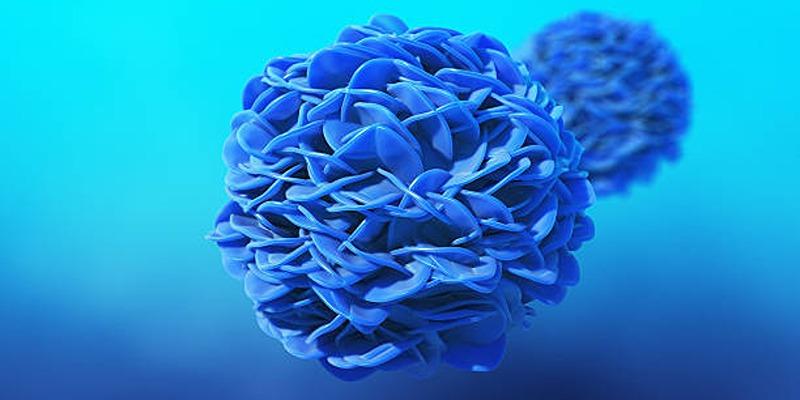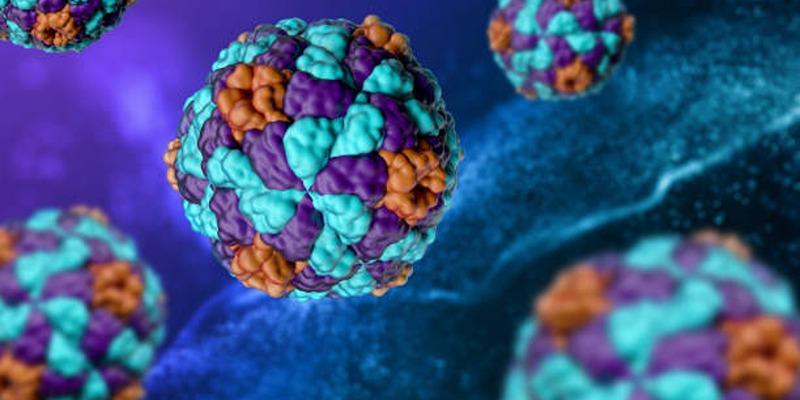With most people vaccinated against it, polio has since been downplayed almost to the level of nonexistence in many parts of the globe. However, after its occasional identification in wastewater, there is a probability that it is on the verge of a comeback. Why poliovirus is detected in wastewater? Should we be worried? But how can we protect communities themselves? This article reviews various consequences of identifying poliovirus in wastewater and its concerns to the populace.
What Is Poliovirus and Why Is It Dangerous?
 Poliovirus is easily transmissible through the ingestion of contaminated food by mouth and is most rife in areas with low hygiene standards because it spreads through feces and water. Although anyone can be infected, the most vulnerable are children under the age of five.
Poliovirus is easily transmissible through the ingestion of contaminated food by mouth and is most rife in areas with low hygiene standards because it spreads through feces and water. Although anyone can be infected, the most vulnerable are children under the age of five.
While the majority of affected individuals do not exhibit any symptoms they are still capable of transmitting the virus. It can be like basic flu symptoms that include fever, sore throat, and nausea, and in severe symptoms, paralysis, and in many cases may be permanently paralyzed. In some cases, the muscles involved in breathing are also paralyzed, and this causes death.
Polio vaccines have played a big role in dramatically reducing cases of polio, but the virus still exists. However, the discovery of its presence in wastewater makes one alert of the fact that the dangers are still around.
How Is Poliovirus Monitored in Wastewater?
Monitoring poliovirus in wastewater involves detecting the virus in sewage to understand its presence and circulation in a community. This method serves as an early warning system, helping to identify outbreaks before cases of paralysis emerge.
The Basics of Wastewater Surveillance
Wastewater surveillance is a public health strategy that involves testing sewage for traces of pathogens, including viruses like poliovirus. The idea is simple but powerful: since many diseases, including polio, are excreted through human waste, analyzing sewage provides valuable insights into the presence of pathogens within a community.
Health authorities collect samples from sewage treatment facilities and analyze them in laboratories for genetic material of the virus. This process helps detect poliovirus even when no clinical cases have been reported.
Why It Matters in Polio Eradication
Wastewater monitoring has become a crucial tool in the global effort to eradicate polio. It provides an early warning system, allowing health officials to identify and address areas where the virus may be circulating. By detecting the virus in wastewater, authorities can implement targeted vaccination campaigns to protect at-risk populations and prevent outbreaks.
For instance, countries with established wastewater surveillance systems have been able to identify poliovirus circulation in areas with low immunization rates, even when no cases of paralysis were reported. This proactive approach is essential for keeping polio at bay.
Why Is Poliovirus Found in Wastewater a Concern?
Poliovirus found in wastewater signals the potential spread of the virus within communities. This is especially concerning as it can indicate gaps in immunization coverage, putting unvaccinated individuals at risk.
Asymptomatic Spread
One of the most concerning aspects of detecting poliovirus in wastewater is that it often indicates the presence of asymptomatic carriers. These individuals show no signs of illness but can still shed the virus in their feces, contributing to its silent spread. This hidden transmission makes it challenging to track the virus and control its spread without comprehensive surveillance.
Risk to Under-Immunized Communities
The presence of poliovirus in wastewater is particularly alarming for under-immunized communities. Vaccination rates vary between regions, and areas with lower coverage are at greater risk of outbreaks. If poliovirus is circulating in these communities, even a single case of paralysis could signify a larger, hidden problem.
Vaccine-Derived Poliovirus
Another concern is the detection of vaccine-derived poliovirus (VDPV) in wastewater. Oral polio vaccines contain weakened forms of the virus, which, in rare cases, can mutate and regain the ability to cause disease. When vaccine coverage is high, VDPV poses little risk. However, in areas with low immunization rates, it can lead to outbreaks, making the detection of poliovirus in wastewater a potential warning sign.
What Steps Can Be Taken to Address This Issue?
Addressing the issue of poliovirus in wastewater requires a multi-faceted approach focused on prevention, monitoring, and education.
Strengthening Vaccination Campaigns
Vaccination remains the most effective way to prevent polio. High immunization rates create herd immunity, protecting even those who cannot be vaccinated due to medical reasons. Governments and health organizations must prioritize vaccination campaigns, especially in areas where coverage is low.
In addition to routine immunizations, supplementary immunization activities (SIAs) are crucial. These campaigns provide additional doses of the polio vaccine to children in high-risk areas, ensuring they are fully protected.
Improving Wastewater Surveillance
Expanding and improving wastewater surveillance systems can help detect poliovirus early and guide public health responses. Investments in advanced testing technologies and training for laboratory staff are essential. Additionally, regular monitoring and data sharing between regions can provide a clearer picture of poliovirus circulation and inform decision-making.
Raising Public Awareness
Public awareness campaigns play a vital role in combating polio. Many parents may not realize the importance of vaccinating their children, especially if they believe polio is no longer a threat. Education programs that highlight the dangers of polio and the benefits of vaccination can help address vaccine hesitancy and increase immunization rates.
International Cooperation
Poliovirus knows no borders, making international cooperation essential. Countries must work together to share data, coordinate vaccination campaigns, and support regions with limited resources. Global initiatives, such as the Global Polio Eradication Initiative (GPEI), play a critical role in uniting efforts to eliminate polio.
Should You Be Worried About Poliovirus in Wastewater?
For individuals living in areas with high vaccination rates, the detection of poliovirus in wastewater should not be a cause for immediate concern. Vaccinated individuals are well-protected against the virus, and their immunity helps prevent its spread.
However, the presence of poliovirus in wastewater is a reminder of the importance of maintaining high vaccination coverage. It highlights gaps in immunization programs and underscores the need for continued vigilance. For communities with low vaccination rates, it serves as a call to action to strengthen public health measures and protect vulnerable populations.
The Road Ahead: Eradicating Poliovirus Globally
 Achieving global eradication of poliovirus requires a unified effort, innovative strategies, and sustained commitment from all stakeholders.
Achieving global eradication of poliovirus requires a unified effort, innovative strategies, and sustained commitment from all stakeholders.
Progress Made So Far
The global fight against polio has achieved significant milestones. Cases of wild poliovirus have decreased by over 99% since 1988, thanks to extensive vaccination efforts. Two of the three types of wild poliovirus have been eradicated, leaving only one type still circulating in a few regions.
Challenges to Overcome
Despite these achievements, challenges remain. Political instability, misinformation about vaccines, and logistical barriers continue to hinder immunization efforts in some areas. The emergence of vaccine-derived poliovirus adds another layer of complexity to eradication efforts.
A Collective Responsibility
Eradicating polio requires a collective commitment from governments, organizations, and individuals. By prioritizing vaccination, investing in surveillance systems, and fostering international collaboration, the world can overcome the final hurdles to eliminate polio once and for all.
Conclusion
The detection of poliovirus in wastewater is a public health issue that demands attention but not panic. It serves as a reminder of the virus's ability to circulate silently and highlights the importance of maintaining high vaccination rates. Wastewater surveillance provides valuable data that can guide efforts to prevent outbreaks and protect communities. Polio eradication is within reach, but it requires sustained effort and vigilance. By working together and prioritizing public health, we can ensure a future where poliovirus is a thing of the past.







